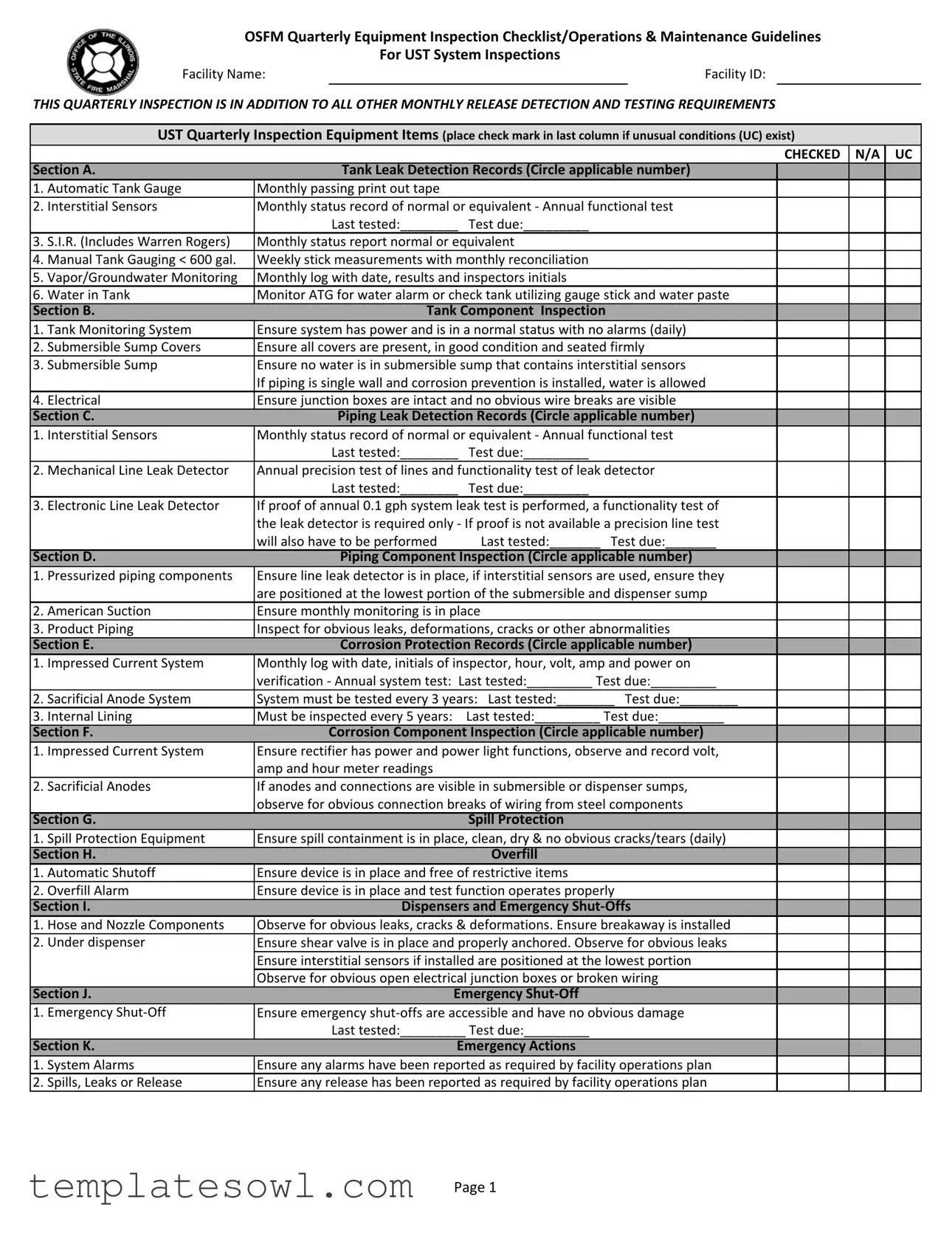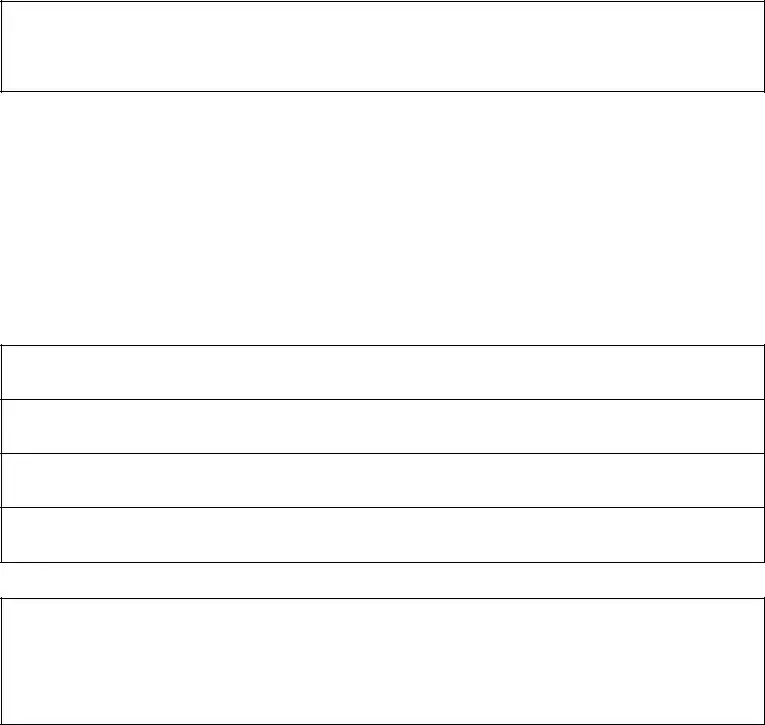What is the purpose of the Quarterly Inspection Report form?
The Quarterly Inspection Report form is designed to ensure that underground storage tank (UST) systems are operating safely and in compliance with regulatory standards. It provides a structured way for facility owners and operators to verify that all necessary inspections and tests have been conducted, as well as to identify any unusual conditions that may require immediate attention.
Who is responsible for completing the inspection?
According to the guidelines, the A/B Operators must conduct the quarterly inspections personally. Their involvement is crucial, as they possess the necessary knowledge and training to identify potential problems and ensure comprehensive compliance with state regulations.
What specific items are included in the inspection checklist?
The inspection checklist is divided into several sections, each targeting critical elements of UST systems. These include tank leak detection records, tank component inspections, piping leak detection records, corrosion protection records, spill protection, overfill equipment, dispensers, emergency shut-off mechanisms, and actions taken during emergencies. Each section is designed to thoroughly evaluate the condition and functionality of the equipment involved.
How do I deal with unusual conditions found during the inspection?
If you encounter any unusual conditions during the inspection, it is essential to note these in the remarks section of the form. Ensure you specify what the condition is, the date the owner was notified, and the actions that were taken to address it. Clear documentation will aid in tracking and resolving issues effectively.
Is there a required timeline for submitting the inspection report?
The completed Quarterly Inspection Report should be signed and dated by the A/B Operator. Although the form itself does not specify an immediate submission deadline, keeping thorough records and submitting them alongside your annual reports as per compliance requirements is essential. This documentation serves as a critical part of your facility's overall operations and maintenance plan.
What to do if testing shows a failure in any equipment?
In the event that testing reveals a failure in any equipment, immediate corrective actions must be taken. This may involve repairs or replacements to ensure the UST system is functioning correctly. Furthermore, all findings should be documented in the inspection report, along with details of the actions taken, and communicated with appropriate personnel as part of compliance procedures.
Can the Quarterly Inspection Report form be used for other purposes?
This form can indeed be part of a broader Operations & Maintenance Plan. If you choose to use the Quarterly Inspection Report as part of such a plan, remember to attach the list of your class A/B & C Operators and your facility's Emergency Response Procedures. The thorough integration of these components enhances overall safety and compliance preparedness.
What should be done if I do not have a certified A/B Operator?
If a facility does not have a certified A/B Operator, it cannot carry out the quarterly inspections until one is obtained. Certification for these operators is mandatory, as they are tasked with vital responsibilities concerning the safety and regulatory compliance of the UST systems.
What records must I maintain beyond the Quarterly Inspection Report?
In addition to the Quarterly Inspection Report, you are responsible for maintaining records of all monthly release detection and testing requirements, daily inspections of spill protection equipment, and any other required inspections. These records should be kept systematically to ensure that they are readily accessible for review during inspections by regulatory agencies.


